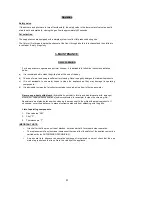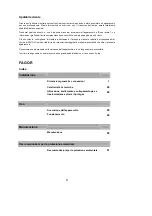
41
POSITION AND TEMPERATURES (Table no. 5)
Table of different types of gases
(Table 6)
1
.-
INSTALLATION
Positioning and levelling
The positioning and electrical and gas installation should always be carried out by an AUTHORISED
TECHNICIAN, observing the standards of each country.
∗
It is advisable to install an extraction hood for the optimum operation of the appliance.
∗
Place the appliance in a well-ventilated place.
∗
Level and adjust the height of the appliance. (Fig. 1)
Gas connection
An Authorised Technician, observing the regulations in each country, must always carry out the
appliance's gas connection.
The general installation must have a stopcock and a pressure regulator and it is also advisable to install a
shut-off cock on each individual appliance.
The appliance’s gas inlet is labelled G in the diagrams on page 1.
Conversion to different gases
If the appliance is prepared for a different type of gas to the one available in the installation, you should
proceed as follows:
Cut off the gas to the appliance if connected. (Any conversion of the appliance's gas circuit must always be
carried out by a QUALIFIED TECHNICIAN).
To adjust your appliance to work with a different type of gas, proceed in the following way:Turn the
appliance off at the mains (if it is connected).
POSITION
1 2 3 4 5 6 7
APPROX.TEMP. (ºC)
100 130 160 200 230 270 300
Kcal/m3 Kcal/kg
TOWN GAS
NATURAL GAS
LPG.
G-110 G-120 G-130 G-150
G-20 G-25 G-25.1 GZ-35
G-30 G-31
LOWER CALORIFIC
POWER
For Liquid Petroleum Gas (L.P.G.) and Natural Gas the appliance should be connected to the mains as
shown in Figure 5

























